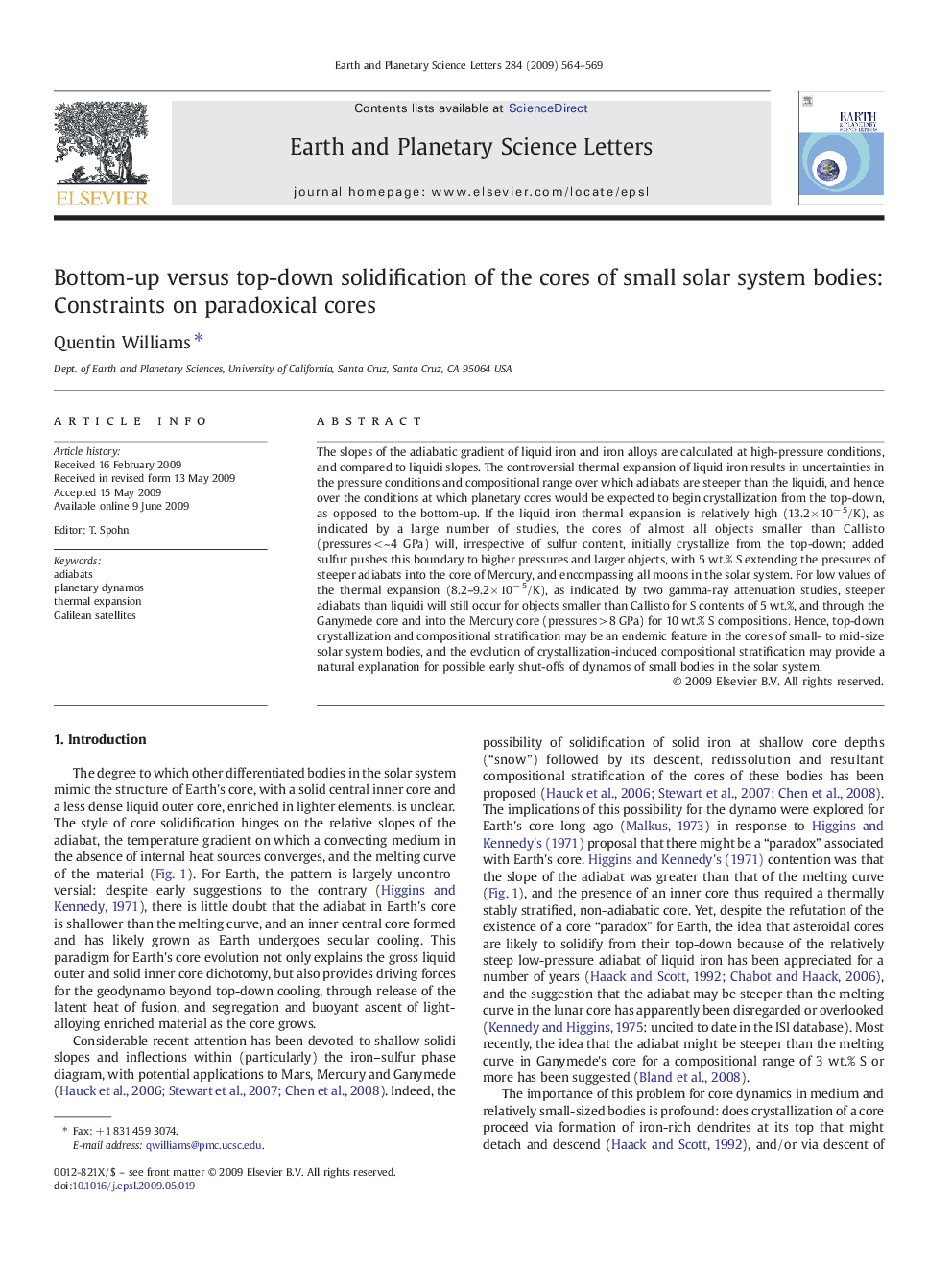| Article ID | Journal | Published Year | Pages | File Type |
|---|---|---|---|---|
| 4679008 | Earth and Planetary Science Letters | 2009 | 6 Pages |
The slopes of the adiabatic gradient of liquid iron and iron alloys are calculated at high-pressure conditions, and compared to liquidi slopes. The controversial thermal expansion of liquid iron results in uncertainties in the pressure conditions and compositional range over which adiabats are steeper than the liquidi, and hence over the conditions at which planetary cores would be expected to begin crystallization from the top-down, as opposed to the bottom-up. If the liquid iron thermal expansion is relatively high (13.2 × 10− 5/K), as indicated by a large number of studies, the cores of almost all objects smaller than Callisto (pressures < ~ 4 GPa) will, irrespective of sulfur content, initially crystallize from the top-down; added sulfur pushes this boundary to higher pressures and larger objects, with 5 wt.% S extending the pressures of steeper adiabats into the core of Mercury, and encompassing all moons in the solar system. For low values of the thermal expansion (8.2–9.2 × 10− 5/K), as indicated by two gamma-ray attenuation studies, steeper adiabats than liquidi will still occur for objects smaller than Callisto for S contents of 5 wt.%, and through the Ganymede core and into the Mercury core (pressures > 8 GPa) for 10 wt.% S compositions. Hence, top-down crystallization and compositional stratification may be an endemic feature in the cores of small- to mid-size solar system bodies, and the evolution of crystallization-induced compositional stratification may provide a natural explanation for possible early shut-offs of dynamos of small bodies in the solar system.
